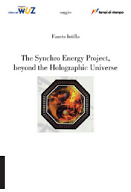 SOURCE
SOURCEScienceDaily (July 1, 2009) — Researchers in the Department of Physics and Astronomy at the University of Leicester have developed a new synthesis method, which has led them to the discovery of fluorescent silicon nanoparticles and may ultimately help track the uptake of drugs by the body's cells.
Dr Klaus von Haeften explained: "A key advantage of the new method is the independent control of the nanoparticles' size and their surface properties. The method is extremely versatile and produces the fluorescent suspensions in one go. The findings may revolutionise the performance of electronic chips while satisfying the increasing demand for higher integration densities."
The nanoparticles contain just a few hundred silicon atoms and their fluorescence were discovered after mixing them with water. This resulted in stability in fluorescence intensity over more than a three month period.
An interdisciplinary research project with the Department of Chemistry, led by Professor Chris Binns and Dr Glenn Burley, also incorporates this new method of synthesis. They are aiming to link nanoparticles to drugs involved in the diagnosis and treatment of cancer.
Professor of Nanoscience in the Department of Physics and Astonomy, Chris Binns said: "Nanotechnology, that is, the use of structures whose dimensions are on the nanometre scale, to build new materials and devices, appears to hold the key to future developments in a wide range of technologies, including materials, science, information technology and healthcare."
Dr von Haeften added: "The approach developed in Leicester could be a key step towards the production of a variety of biomedical sensors that could help track the uptake of drugs by cells."
The benign nature of silicon also makes the nanoparticles useful as fluorescent markers for tagging biologically sensitive materials. The light from a single nanoparticle can be readily detected.
The results of this work were published this week Applied Physics Letters journal by researchers Anthony Brewer and Klaus von Haeften.
The research appears in: volume (94) of Appl. Phys. Lett. and the page number (261102)
Adapted from materials provided by University of Leicester, via EurekAlert!, a service of AAAS.
The nanoparticles contain just a few hundred silicon atoms and their fluorescence were discovered after mixing them with water. This resulted in stability in fluorescence intensity over more than a three month period.
An interdisciplinary research project with the Department of Chemistry, led by Professor Chris Binns and Dr Glenn Burley, also incorporates this new method of synthesis. They are aiming to link nanoparticles to drugs involved in the diagnosis and treatment of cancer.
Professor of Nanoscience in the Department of Physics and Astonomy, Chris Binns said: "Nanotechnology, that is, the use of structures whose dimensions are on the nanometre scale, to build new materials and devices, appears to hold the key to future developments in a wide range of technologies, including materials, science, information technology and healthcare."
Dr von Haeften added: "The approach developed in Leicester could be a key step towards the production of a variety of biomedical sensors that could help track the uptake of drugs by cells."
The benign nature of silicon also makes the nanoparticles useful as fluorescent markers for tagging biologically sensitive materials. The light from a single nanoparticle can be readily detected.
The results of this work were published this week Applied Physics Letters journal by researchers Anthony Brewer and Klaus von Haeften.
The research appears in: volume (94) of Appl. Phys. Lett. and the page number (261102)
Adapted from materials provided by University of Leicester, via EurekAlert!, a service of AAAS.















Nessun commento:
Posta un commento